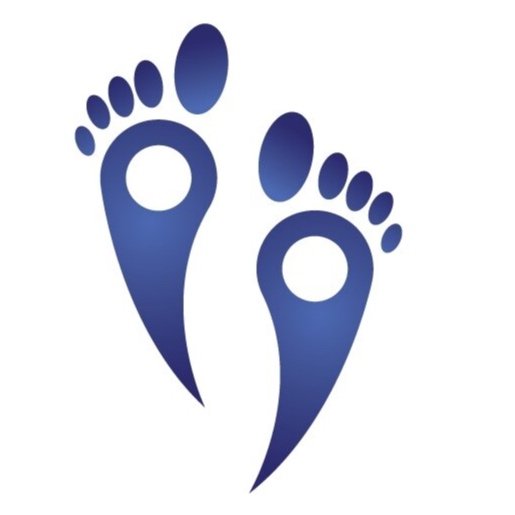
SPORTS PODIATRY & PHYSIOTHERAPY
Enhance performance & reduce your risk of injury
Sports Podiatry & Physiotherapy
What is sports podiatry?
Sports Podiatry is a specific field of podiatry focusing on diagnosing, preventing and treating injuries related to sport. It is very important to accurately diagnose the complaint prior to developing a treatment plan. By using the latest assessment techniques, such as gait analysis and video capture software we can diagnose your problem accurately and get you back on track to return to sport as soon as possible.
We specialise in treating runners, triathletes, footballers, cricketers and athletes of all abilities.
So, how do you know if you should see a sports podiatrist or an orthopaedic surgeon instead of a regular podiatrist or an orthopaedic surgeon? Sports podiatrists, as the name implies, work with those who participate in leisure or professional sports. People frequently utilise them for training and injury prevention before to major events. Sports podiatrists, on the other hand, may be beneficial to persons who consistently damage their feet or legs, which may signal a mechanical or physical problem.
One of the first things a sports podiatrist will do when you visit them is evaluate your walk. A gait scanner, which is a pressure-sensitive pad that analyses how your feet make contact with the ground, how forceful your steps are, where you lay pressure, and how you alter that pressure as you move, will most likely be used to accomplish this.
A sports podiatrist will check your walk visually and monitor the chain of motion in addition to the gait scanner. This is how the energy you use to walk travels through your body: from your feet to your knees, hips, and back. This will allow the podiatrist to spot any abnormal motions that could be the outcome or cause of a more serious problem. In most circumstances, a podiatrist can define the issue location and determine the condition immediately by visually evaluating a patient.
Your podiatrist will recommend a treatment plan to address the problem as soon as it is recognised. This will vary depending on the issue at hand, but it will almost always include stretches and possibly muscle-strengthening exercises. They may recommend bespoke orthotic inserts for you to fix any misalignment or movement you've developed. They may also recommend that you get new or right footwear, as wearing the proper sports shoe is critical to maintaining your foot health.
Sports podiatrists specialise in both sports and feet, though they are not confined to either. Sports podiatrists can help anyone who has worries about their feet or lower limbs, whether they're looking for preventative care or trying to fix an existing problem. Sport podiatrists are nothing to be afraid of, with simple and non-invasive tests, so don't wait any longer if you believe you should see one.
What is Sports Physiotherapy?
Sports physiotherapy is a subspecialty of physiotherapy that focuses on the assessment and treatment of sports and exercise-related injuries at all levels and ages. Whether it's running the London marathon, playing Manchester United football, or climbing Everest, each injury must be addressed in the context of the activity's demands. Sports physiotherapists are concerned not only with getting athletes out of pain and back to full function, but also with the individual's performance and development.
Sports injuries are distinct from everyday injuries. Sport places greater demands on the body than regular activities like walking. This puts extra strain on the joints, ligaments, muscles, and tendons, making them more vulnerable to injury.
What does a sports physiotherapist do?
Sports physiotherapists play a variety of roles, including:
Injury evaluation - this entails extensive questions regarding the current injury as well as previous injuries, as well as a complete examination of the body.
Identifying the injury's fundamental cause — the source of pain is frequently not the source of the injury. An in-depth examination will reveal the causes that have contributed to the damage.
Individualised treatment plan development - this will address all weaknesses and imbalances. To avoid recurrence, we want an athlete to recover stronger from their injury.
Strengthen and improve the mechanics of other bodily parts. This is especially important if an athlete needs to take a break from sports to recover.
Using realistic return-to-sport timelines. This is a skill that can only be learned through practise. Various people heal injuries at different rates.
Participating in a multi-disciplinary team. This could be a member of the immediate team, such as the coach, team management, sports doctor, or parent, or it could necessitate a recommendation to a member of the extended team, such as a sports psychologist or dietician.
Injury prevention entails recognising all modifiable injury risk factors and devising a strategy to address them.
Who can it help?
A sports podiatrist can assist people with a variety of concerns, not all of which are related to their feet. This is due to the fact that the manner we walk or run might injure other sections of the body. If you experience any of the following symptoms, you should see a sports podiatrist:
pain in your foot and toes
ankle problems
heel pain
knee pain
hip pain
issues with your calf or Achilles tendon
leg and shin pain
lower back pain
Sports podiatrists treat persons of all ages and abilities. They deal with both professional and amateur runners.
Acute and chronic sports injuries are the two types of sports injuries. Acute sports injuries entail a single traumatic event (such as a fall or collision), whereas chronic sports injuries involve the gradual emergence of pain and other symptoms over time. The vast majority of persons who visit a sports podiatrist have long-term sports injuries.
What does it involve?
An assessment, often known as a biomechanical examination, is usually the first step in treatment.
This entails observing your movements and how you utilise your legs and feet in order to determine where the pressure is falling and what forces are pressing on your foot.
The workouts and technologies used in each clinic may differ. Gait analysis, in particular, is a rapidly expanding field, and some clinics can already use a camera array and sophisticated software to produce moving 3D models of how you run.
Following the evaluation, the podiatrist may offer suggestions on:
appropriate or supportive footwear
how to strengthen your joints
how to adjust your gait
what movements to avoid to prevent injury
The podiatrist may also use tape or strapping to provide short-term support, perform joint mobilisation exercises with you, and refer you to an appropriate activity regimen.
Finally, if your podiatrist specialises in orthotics, they may be able to advise you on the best type of orthosis for you to help support your foot and realign your bone to its proper position.
How do sports podiatrist & physiotherapist will treat your injury?
It's all about the'marginal' advantages in sports, and the management of sports injuries is no exception. Sports physiotherapists are constantly looking for novel treatment techniques or technology to help athletes recover faster.
A sports physiotherapist is skilled in 'hands-on' therapy and has significant training and expertise in soft tissue and joint treatments like myofascial release and spine manipulation. Injury treatment and rehabilitation skills, on the other hand, are often where they stand apart. Many people have researched strength and conditioning in order to ensure that your recovery is periodized and that your athletic ability is developed so that you can return stronger after an injury. Many joint, tendon, and muscle injuries are caused by a lack of strength, and most treatment regimens and injury prevention programmes include strengthening exercises.
Shockwave therapy (also known as ESWT – Extracorporeal Shockwave Therapy)
Many tendon ailments, particularly those connected to running, such as proximal hamstring, Achilles, and plantarfascitis, respond well to shockwave therapy. We recommend that you schedule at least three sessions. This must be done in conjunction with a rehabilitation programme.
Occlusion Therapy
Occlusion is utilised after procedures or when an athlete needs to increase strength and muscle size (hypertrophy) quickly while without placing too much weight through the joint. The majority of strength training is done at 70-80% of one rep max (1RM). Occlusion treatment, on the other hand, allows for gains in strength and muscle mass at 30% of one rep max (1RM). This results in reduced joint compression and, as a result, less pain while training, while yet encouraging the necessary increases.
Ultrasound guided injections
Ultrasound-guided injections can help relieve pain from a variety of sports injuries. These should only be used for injuries that prevent you from participating in a rehabilitation programme due to pain. An anti-inflammatory impact of a steroid injection or hyaluronic acid can result in a significant reduction in pain. This can hasten the recuperation process and give you more time to enrol in a rehabilitation programme.

